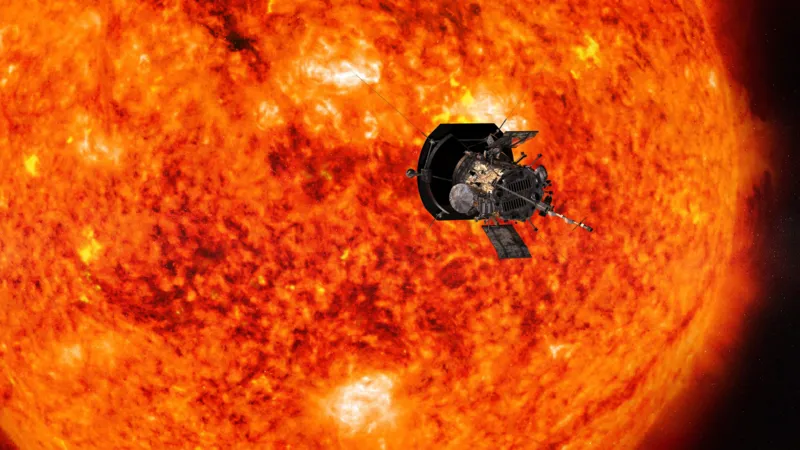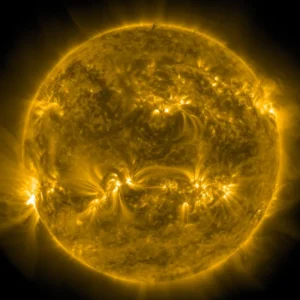
A Nasa spacecraft is attempting to make history with the closest-ever approach to the Sun.
The Parker Solar Probe is plunging into our star’s outer atmosphere, enduring brutal temperatures and extreme radiation.
It is out of communication for several days during this burning hot fly-by and scientists will be waiting for a signal, expected at 05:00 GMT on 28 December, to see if it has survived.
The hope is the probe could help us to better understand how the Sun works.

Parker Solar Probe launched in 2018, heading to the centre of our solar system.
It has already swept past the Sun 21 times, getting ever nearer, but the Christmas Eve visit is record-breaking.
At its closest approach, the probe is 3.8 million miles (6.2 million km) from our star’s surface.
This might not sound that close, but Nasa’s Nicola Fox puts it into perspective: “We are 93 million miles away from the Sun, so if I put the Sun and the Earth one metre apart, Parker Solar Probe is four centimetres from the Sun – so that’s close.”
The probe will have to endure temperatures of 1,400C and radiation that could frazzle the onboard electronics.
It is protected by a 11.5cm (4.5 inches) thick carbon-composite shield but the spacecraft’s tactic is to get in and out fast.
In fact, it will be moving faster than any human-made object, hurtling at 430,000mph – the equivalent of flying from London to New York in less than 30 seconds.
Parker’s speed comes from the immense gravitational pull it feels as it falls towards the Sun.
Nasa scientists face an anxious wait over Christmas while the spacecraft is out of touch with Earth.
Nicola Fox says that as soon as a signal is beamed back home, the team will text her a green heart to let her know the probe is OK.
She admits she is nervous about the audacious attempt, but she has faith in the probe.
“I will worry about the spacecraft. But we really have designed it to withstand all of these brutal, brutal conditions. It’s a tough, tough little spacecraft.”
If it survives this challenge, the probe will continue its mission around the Sun into the future.
